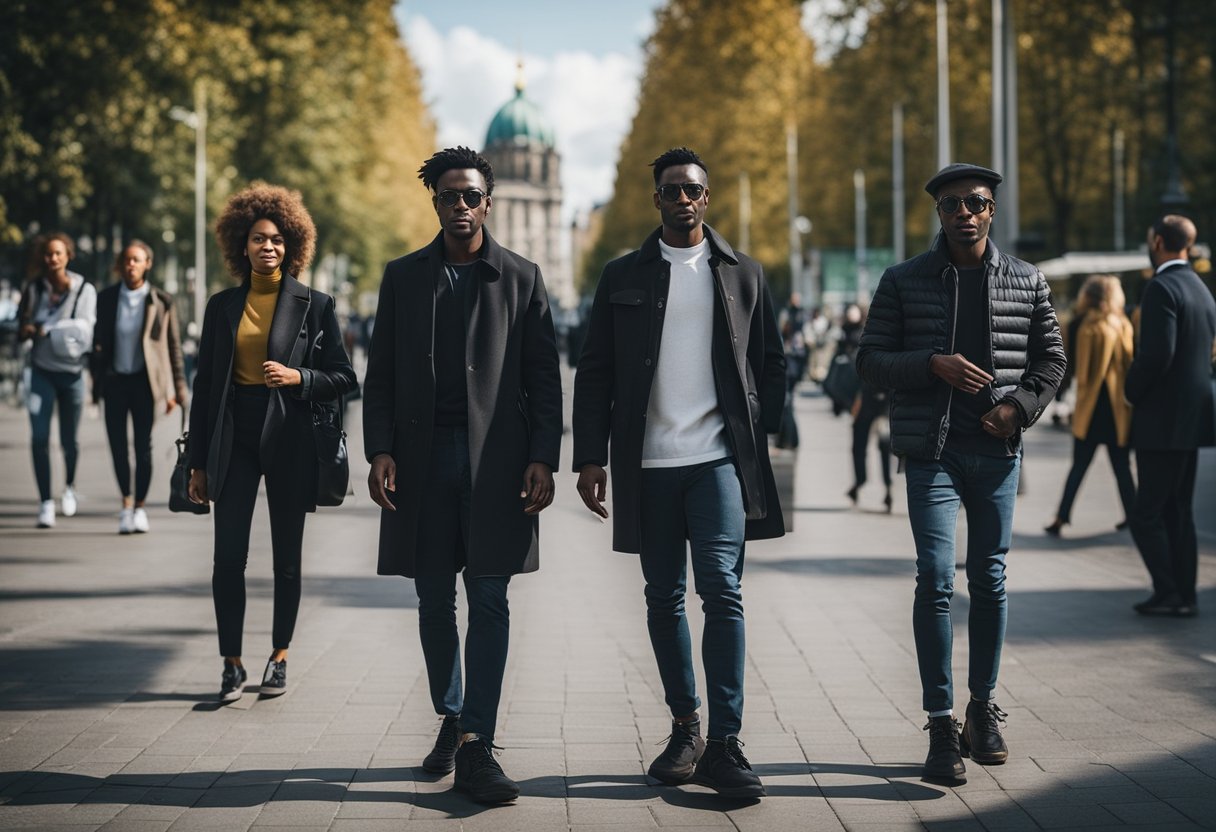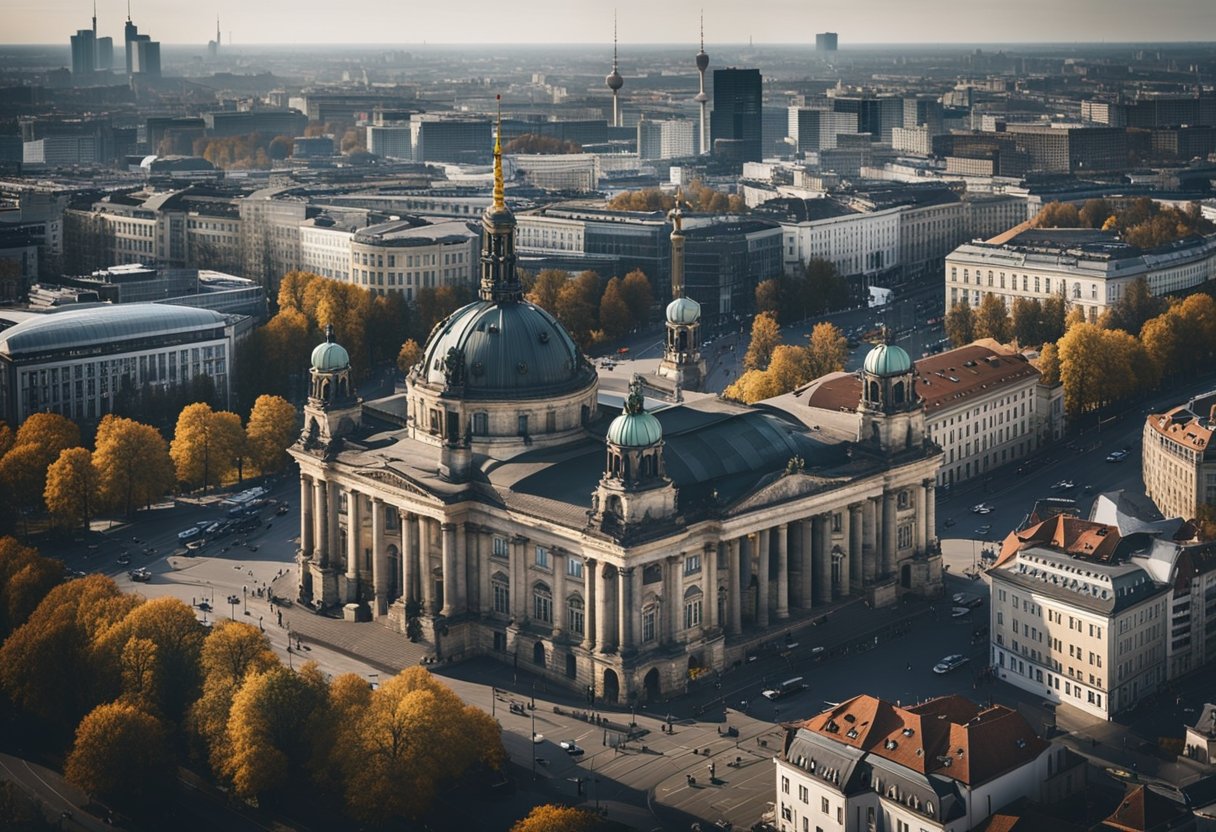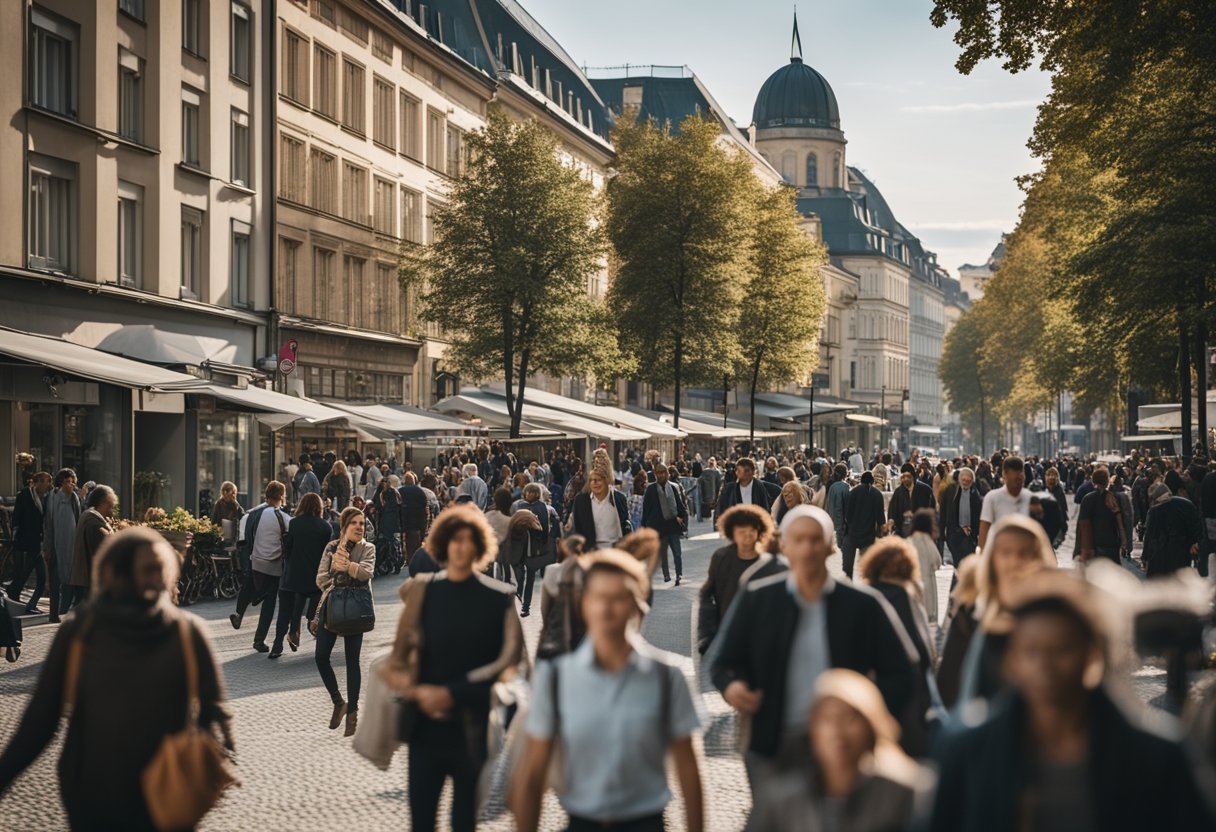Berlin, Germany’s capital city, has seen a significant transformation in its demographic composition over the years.
As of December 2019, the city had a total population of over 3.7 million inhabitants within its 891.82 square kilometers. Black population in Berlin, who are part of this population, include individuals with Sub-Saharan African ancestry, as well as those who are citizens or permanent residents of the city.

The exact number of Black people in Berlin is not definitively documented, as the city’s official statistics tend to categorize individuals based on nationality rather than ethnicity or race.
However, some insights can be gleaned from studies and surveys focusing on ethnic and migratory backgrounds. It is acknowledged that Black people constitute a visible minority within Berlin’s diverse ethnic landscape, contributing to the city’s rich cultural fabric through various societal roles.
Given the complexity of tracking exact ethnic populations in Berlin due to the nature of available data, understanding the experiences of Black residents is equally important.
Reports and studies, like those indicating their encounters with racism, provide a more nuanced picture of what it is like to be a Black person living in Berlin. These perspectives are essential for comprehending both the quantitative and qualitative aspects of the Black population in Germany’s urban centers.
Demographic Overview-Black Population in Berlin

The demographic landscape of Berlin is a crucial reflection of its diverse and vibrant population. Analyzing the latest data sources and ethnic composition provides insights into the city’s dynamic nature.
Population Data and Sources
The German census and statistical surveys provide the most reliable data on the population of Berlin. Official figures from December 2019 indicate that Berlin had approximately 3.7 million registered inhabitants within its city limits.
The Demographics of Berlin page provides an extensive analysis of these figures. Another important source is the Berlin Population 2024 estimate from the World Population Review which projects demographic data including the city’s density and estimates from over 180 countries contributing to the city’s population.
Ethnic Composition of Berlin
Berlin’s ethnic tapestry is rich and complex, with a significant population of individuals of Sub-Saharan African descent. These individuals are often referred to as Afro-Germans or Black Germans.
The exact number living in Berlin is not definitively stated in typical statistics; however, they are a visible minority within Germany’s largest city.
Information on the broader demographic of Afro-Germans in Germany suggests there are about 1 million nationwide, as detailed on the Afro-Germans Wikipedia page. The ethnic composition of Berlin is reflective of Germany’s overall diversity, but specific numbers for the city require more targeted demographic research and data collection.
Historical Context

To understand the demographics of Black people in Berlin, a consideration of historical events shaping their presence is essential. From the history of Black individuals in Germany to the World Wars and subsequent migration movements, these factors collectively influence the ethnic landscape of Berlin.
History of Black People in Germany
The presence of Black people in Germany dates back to at least the 1700s, with records indicating that a ship carrying slaves from Africa arrived in Hamburg in 1682.
During the 18th century, African musicians were known to be employed in Prussian military bands. The Black community, although small, has been a part of German society long before the country’s colonial pursuits in Africa, which included territories like Namibia.
The Herero and Namaqua genocide during the early 20th century remains a dark chapter of German colonial history.
Impact of World Wars on Black Population
Germany’s involvement in World War I and World War II significantly affected the Black Diaspora in the region. The Treaty of Versailles, which concluded World War I, saw many African soldiers in the French army occupy the Rhineland.
These soldiers and their descendants, known as the Rheinlandbastarde, were subjected to racism and sterilization under the Nazis.
During World War II, Black people, along with Jews, Roma, and Eastern Europeans, faced persecution and were impacted by the Nuremberg Laws which institutionalized racial discrimination.
Migration Movements and Ethnic Diversity
Post-World War II saw significant changes in Germany’s ethnic makeup. The country experienced waves of migration, largely due to labor shortages and political upheavals.
Many Africans arrived from countries such as Ghana and Cameroon, contributing to the growth of Black communities in urban centers, including Berlin. These migrations enriched Germany’s cultural diversity with influences in music, particularly jazz, and facilitated the development of a multifaceted African diaspora.
Contemporary Social Dynamics

In Berlin, the living experience of Black individuals is shaped by factors such as racial and ethnic identity and community organizations. These dynamics play a crucial role in the everyday experiences of Black residents in the German capital.
Racial and Ethnic Identity
In Berlin, racial and ethnic identity greatly impacts the lives of Black people. Various forms of discrimination and racism have been reported, reflecting continued societal challenges.
It’s important to acknowledge the profound history and how it continues to manifest in the present, from the residual effects of the Nazi period and the Third Reich to more contemporary forms of racism.
Black residents regularly engage with the complex layers of their identity, from their African heritage to their daily lives as citizens in a multicultural city like Berlin.
Community Organizations and Contributions
Various community organizations address the needs of Black Berliners, celebrating their contributions and providing support against racism.
Organizations such as Each One Teach One (EOTO) and the Initiative Schwarze Deutsche (ISD) play pivotal roles in the empowerment and advocacy for people of African descent in Germany.
They contribute significantly to civil society by working with policymakers, promoting educational initiatives, and supporting anti-discrimination efforts, highlighting the vibrant cultural tapestry Black communities add to Berlin’s social landscape.
Economic Perspectives

In Berlin, the economic experiences of Black people encompass both opportunities and challenges within the labor market. This includes aspects such as employment rates, types of occupations, and the extent of income inequalities.
Employment and Occupational Distribution
In Berlin, employment among Black people varies across different sectors. It is important to note that while they contribute to a range of professional fields, there is a noticeable concentration in certain industries.
Challenges in accessing higher-paying jobs and management positions have been reported, a reflection of broader trends in Germany where systemic barriers may exist. Initiatives aimed at boosting the employment rates and broadening the occupational distribution for Black individuals are central to economic inclusion.
Income Disparities and Economic Inclusion
Income disparities between Black people and the general population in Berlin can indicate the presence of economic inequality.
Efforts to foster economic inclusion have been centered on creating equitable job opportunities and addressing the wage gap.
The goal is to ensure that Black residents in Berlin are not only gainfully employed but also have opportunities to advance economically and are proportionally represented in all levels of the job market.
Integration and Representation

In the vibrant city of Berlin, the integration and representation of black people are crucial topics, given their growing presence and influence in the metropolis.
These issues encompass the challenges and progress in areas such as cultural assimilation, political engagement, and educational policies.
Cultural Integration and Language
The process of cultural integration for Berlin’s black population is complex, largely due to the city’s diverse makeup of migrants from regions like West Africa and the United States.
Language plays a pivotal role in this integration, with German language acquisition being a fundamental step for new citizens, including those of African heritage, to navigate daily life and access opportunities.
Efforts by civil society organizations seek to facilitate this language learning, which helps reduce barriers and foster a more inclusive environment for people of African descent.
Political Representation and Civic Engagement
Political representation and civic engagement for black Germans, particularly in Berlin, signal growing participation in the democratic process.
Public figures like Aminata Touré, of African descent, exemplify the strides in representation at various government levels.
Moreover, involvement in civil society by groups such as the Initiative Schwarze Menschen in Deutschland (ISD) empowers the black community, encouraging greater political involvement and advocacy against racism and extremism.
Education and Public Policy
In education and public policies, black people in Berlin continue to confront challenges. However, initiatives by the federal government and the Federal Anti-Discrimination Agency aim to address disparities and improve outcomes.
Education is a primary avenue for combating racism, and Berlin’s policies are increasingly focusing on awareness and inclusiveness for students from diverse backgrounds, including those with African and Muslim heritage.
The city’s commitment to educational reform is key to ensuring that black Germans and residents can contribute fully to society.
Frequently Asked Questions
This section provides specific information on the Afro-German population in Berlin, notable figures, demographics by nationality, overall statistics, historical changes, and cultural contributions.
What is the population of Afro-Germans in Berlin as of the latest census?
The exact population of Afro-Germans in Berlin, as of the latest census, is not detailed publicly. However, studies and surveys, like the one highlighted by the Berliner Zeitung, aim to shed light on the experiences and number of Black individuals in Germany.
Can you name some notable Black German public figures?
Germany has several notable Black public figures such as Haddaway, a singer, and Aminata Touré, a politician who became the first Black Vice President of a state parliament in Germany.
What are the statistics on Berlin’s population by nationality?
Statistics on Berlin’s population by nationality reveal a diverse city where multiple nationalities coexist. The city is home to a significant Turkish community, people of Polish descent, and individuals from Arab countries, among others.
What is the total population of Germany and its capital, Berlin?
The total population of Germany is approximately 83 million, and its capital, Berlin, has a population of about 3.6 million as of recent data.
How has the population of Berlin changed since 1940?
Since 1940, Berlin’s population underwent significant changes, decreasing during and after World War II, and then steadily growing in the following decades to reach its current level.
What can you tell us about the history and influence of Afro-German culture?
Afro-German culture has a significant history in Germany, with mixed African and German heritage dating back to colonial times and even earlier. The influence of Afro-Germans is felt in art, music, and politics, contributing to the multicultural landscape of Berlin and Germany.